
Enchanting Old Town of Riga: A Medieval Wonder
Discover the medieval charm of Riga's Old Town, a UNESCO World Heritage Site brimming with historic landmarks, vibrant street life, and delightful local flavors.
Step into Riga's Old Town, where cobblestone streets, Gothic spires, and charming medieval architecture transport you back in time. This UNESCO World Heritage Site is the heart of Latvia’s capital and offers an enchanting blend of history, culture, and vibrant nightlife. Marvel at the iconic House of the Blackheads, a striking Gothic building that dates back to the 14th century. Just around the corner, you’ll find the imposing St. Peter’s Church, with its towering spire offering panoramic views of the city. The Three Brothers, a trio of ancient buildings, showcase the evolution of Riga's architectural styles over centuries. As you wander through the maze of narrow streets, you'll discover cozy cafes, trendy boutiques, and a variety of restaurants serving both traditional Latvian dishes and international cuisine. Don't miss the bustling Riga Central Market, housed in old Zeppelin hangars, where you can sample local delicacies like smoked fish and rye bread. In the evening, the Old Town comes alive with music and laughter. Enjoy live performances in the main squares, or visit one of the many bars and pubs that offer a taste of Riga's lively nightlife. Whether you're a history buff, a foodie, or simply looking to soak in the atmosphere, Riga’s Old Town promises an unforgettable experience.
Local tips in Old Town
- Wear comfortable shoes for walking on cobblestone streets.
- Visit St. Peter’s Church early in the morning to avoid crowds.
- Try local delicacies at Riga Central Market, especially the smoked fish.
- Take a guided tour to learn about the history and legends of the Old Town.
- Check local listings for live music events in the main squares.
- Be aware of your belongings, as the area can get crowded with tourists.
Enchanting Old Town of Riga: A Medieval Wonder
Step into Riga's Old Town, where cobblestone streets, Gothic spires, and charming medieval architecture transport you back in time. This UNESCO World Heritage Site is the heart of Latvia’s capital and offers an enchanting blend of history, culture, and vibrant nightlife. Marvel at the iconic House of the Blackheads, a striking Gothic building that dates back to the 14th century. Just around the corner, you’ll find the imposing St. Peter’s Church, with its towering spire offering panoramic views of the city. The Three Brothers, a trio of ancient buildings, showcase the evolution of Riga's architectural styles over centuries. As you wander through the maze of narrow streets, you'll discover cozy cafes, trendy boutiques, and a variety of restaurants serving both traditional Latvian dishes and international cuisine. Don't miss the bustling Riga Central Market, housed in old Zeppelin hangars, where you can sample local delicacies like smoked fish and rye bread. In the evening, the Old Town comes alive with music and laughter. Enjoy live performances in the main squares, or visit one of the many bars and pubs that offer a taste of Riga's lively nightlife. Whether you're a history buff, a foodie, or simply looking to soak in the atmosphere, Riga’s Old Town promises an unforgettable experience.
Iconic landmarks you can’t miss
The Freedom Monument
Explore the Freedom Monument in Riga, a stunning symbol of Latvian independence and a must-see for every visitor to Latvia's capital.

House of the Black Heads
Discover the captivating history and stunning architecture of the House of the Black Heads, a must-visit cultural landmark in Riga, Latvia.

Dome Square
Dome Square: A captivating historical landmark in Riga, rich in culture and architectural beauty, perfect for leisurely exploration.

Riga Cathedral
Discover Riga Cathedral, a stunning blend of architectural beauty and cultural heritage in the heart of Latvia's capital, Riga.

Riga Castle
Explore the majestic Riga Castle, a historical gem offering a glimpse into Latvia's rich heritage and stunning architecture in the heart of Riga.

Plac Ratuszowy
Explore Plac Ratuszowy, the vibrant heart of Riga, where history meets culture in a picturesque setting filled with local events and culinary delights.
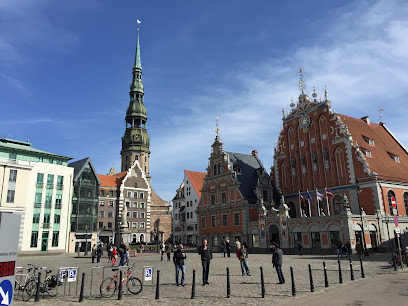
Rathausplatz Riga
Explore the charming Rathausplatz in Riga, where historic architecture meets vibrant local culture in the heart of the old town.

Latvian Riflemen Monument
Discover the Latvian Riflemen Monument, a symbol of bravery in Riga that celebrates the history and heritage of Latvia's courageous soldiers.

Monument 1905 The Fighters
Discover the Monument 1905 The Fighters in Riga, a historical landmark celebrating resilience and Latvian heritage amidst picturesque parklands.

Coats of Arms of Latvian Municipalities Mural (LV100)
Explore the Coats of Arms of Latvian Municipalities Mural in Riga, a vibrant artwork celebrating Latvia's rich heritage and local identities.

Reconocimiento UNESCO al Centro Histórico de Riga
Explore the stunning architecture and vibrant culture of Riga's Historic Center, a UNESCO World Heritage site rich in history and charm.

Monument and former place of residence of Dr. Ernst Von Bergmann
Explore the Monument of Dr. Ernst Von Bergmann in Riga, a testament to Latvia's medical history and a cherished cultural landmark.

Unmissable attractions to see
The Ethnographic Open-Air Museum of Latvia
Explore the Ethnographic Open-Air Museum of Latvia and immerse yourself in the beautiful traditions and history of Latvian culture amidst stunning landscapes.

Riga Free Tours
Explore the enchanting city of Riga with Riga Free Tours, where rich history meets vibrant culture on unforgettable guided adventures.
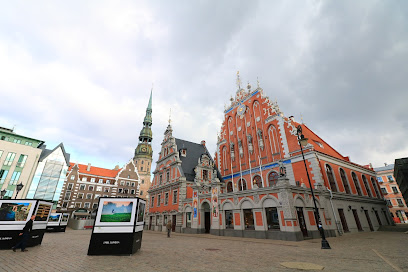
Laima Clock
Discover the Laima Clock in Riga, a stunning landmark symbolizing the heart and spirit of this enchanting city, perfect for capturing unforgettable moments.

Plac Ratuszowy
Explore Plac Ratuszowy, the vibrant heart of Riga, where stunning architecture meets rich cultural experiences in Latvia's charming capital.

Museum of the Occupation of Latvia
Explore Latvia's poignant history at the Museum of the Occupation, where every exhibit tells a story of resilience and national identity.

Līvu laukums
Discover the vibrant ambiance and historical charm of Līvu Laukums, a cultural hub in the heart of Riga, Latvia.

Essential places to dine
Rozengrāls (Vinarium civitatis rigensis)
Experience authentic Latvian cuisine in a historic setting at Rozengrāls in Riga's vibrant Central District.

OGLE
Experience exquisite grilled cuisine at Ogle in Riga's Central District, where flavors come alive amidst a vibrant dining atmosphere.

Pētergailis, restorāns
Experience authentic Latvian cuisine at Pētergailis, where tradition meets taste in the heart of Riga's Central District.

Province restaurant
Experience authentic Latvian flavors at Province Restaurant - where family-friendly dining meets culinary excellence in Riga.

Domini Canes
Discover exquisite European cuisine at Domini Canes in Riga – where flavor meets elegance in every dish.

Milda
Discover Milda: A culinary gem in Riga offering authentic Latvian dishes in a cozy atmosphere.

Kolonade. Our Stories...
Discover culinary excellence at Kolonade in Riga - where tradition meets innovation in every dish.

Zviedru vārti restaurant
Experience authentic Latvian cuisine at Zviedru Vārti Restaurant, where tradition meets modernity in the heart of Riga.
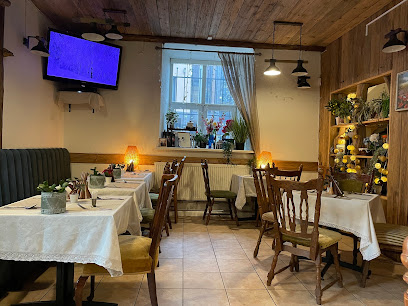
Piazza Italiana
Experience authentic Italian cuisine at Piazza Italiana in Riga's Central District – where every meal is a celebration of flavors.

Olde Riga Restaurant
Discover authentic Latvian cuisine at Olde Riga Restaurant in the heart of Riga's historic district, where tradition meets flavor.

Markets, malls and hidden boutiques
Gallery Centre, Shopping mall
Discover a diverse shopping experience at Gallery Centre, the heart of retail in Riga, Latvia, blending modern style with local charm.

ELKOR Gift Shop suvenīru veikals
Explore ELKOR Gift Shop for authentic Latvian souvenirs, from artisan crafts to unique gifts, embodying the spirit of Riga.

Hobbywool
Discover the enchanting world of yarn and art supplies at Hobbywool in Riga, where creativity and craftsmanship come together in a vibrant atmosphere.

Art Nouveau Rīga - Jūgendstila paviljons
Explore Art Nouveau Rīga: a charming gift shop and craft store showcasing the city's rich artistic heritage and unique handmade items.

Bang Bang Shop & Coffee
Explore a stylish blend of footwear and coffee culture at Riga's Bang Bang Shop & Coffee, where fashion meets flavor in a vibrant atmosphere.

RIIJA
Explore RIIJA in Riga for authentic Latvian souvenirs and crafts that capture the essence of Latvia’s rich culture and heritage.

PODIUM Luxury fashion department store
Discover luxury shopping at PODIUM, Riga's premier fashion department store offering an exquisite selection of high-end brands in a sophisticated setting.

EKO SUVENĪRS Rīga -ECO SOUVENIR Riga
Discover unique Latvian treasures at ECO Souvenir Riga, your go-to shop for authentic crafts and gifts in the heart of the city.
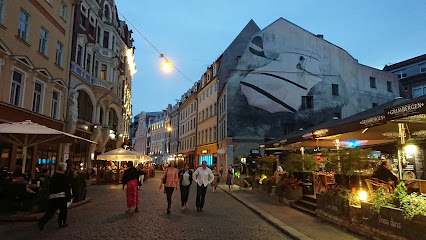
Black Cat Souvenirs
Explore Black Cat Souvenirs in Riga for unique local crafts and delightful gifts that encapsulate the spirit of Latvia.

Lieliska dāvana T-C Galleria Riga
Discover the charm of Latvia at Lieliska Dāvana, your go-to gift shop in Riga for authentic souvenirs and unique local crafts.

Essential bars & hidden hideouts
FUNNY FOX SPORTS, KARAOKE PUB/BAR
Discover the lively spirit of Riga at Funny Fox Sports Karaoke Pub, where sports and music create unforgettable nights in the heart of the city.

Black Magic
Experience the exquisite taste of chocolate and cocktails at Black Magic, a unique bar and chocolate café in the heart of Riga.
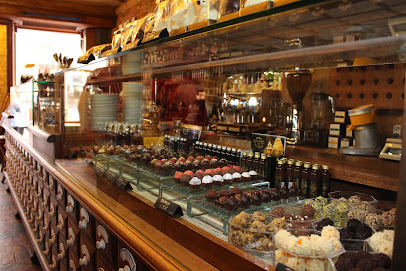
The Armoury Bar
Experience the unique charm of The Armoury Bar in Rīga, where history and hospitality blend seamlessly in a vibrant atmosphere.
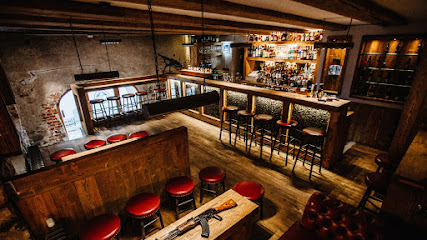
Beer House No.1
Discover Beer House No.1, a lively pub in Riga offering a fantastic selection of local beers and traditional Latvian cuisine in a cozy atmosphere.

Aussie Backpackers Pub
Discover the vibrant culture of Riga at Aussie Backpackers Pub, where drinks, friendship, and fun await in a cozy setting.

KIWI SPORTS PUB/BAR
Discover the ultimate sports viewing experience at KIWI Sports Pub/Bar in Riga - great food, drinks, and an exciting atmosphere await!

CARTEL Bar
Discover CARTEL Bar, a vibrant nightlife gem in Riga offering stylish ambiance, diverse drinks, and unforgettable experiences.

Cynic Bar
Experience the vibrant nightlife of Riga at Cynic Bar, where innovative cocktails and a lively atmosphere await.

Distillers Republic -Local Craft Distillery & Bar
Discover the essence of Latvian craft spirits at Distillers Republic, a bar and distillery in the heart of Riga offering unique cocktails and local delicacies.

DM Bar Riga
Discover DM Bar Riga - a vibrant bar offering a blend of lively atmosphere, affordable drinks, and a taste of local nightlife in the heart of Latvia.

Local Phrases
-
- HelloSveiki
[Svei-ki] - GoodbyeUz redzēšanos
[Uz red-ze-sha-nos] - YesJā
[Ya] - NoNē
[Ne] - Please/You're welcomeLūdzu
[Luu-dzu] - Thank youPaldies
[Pul-dies] - Excuse me/SorryAtvainojiet
[At-vai-no-yie] - How are you?Kā jums klājas?
[Ka yums klaa-yas] - Fine. And you?Labi. Un jums?
[La-bi. Oon yums] - Do you speak English?Vai jūs runājat angļu valodā?
[Vai yoos roo-na-yat ang-lu va-lo-da] - I don't understandEs nesaprotu
[Es ne-sa-pro-tu]
- HelloSveiki
-
- I'd like to see the menu, pleaseEs vēlētos redzēt ēdienkarti, lūdzu
[Es vee-le-tos red-zeet e-dien-kar-ti, luu-dzu] - I don't eat meatEs neēdu gaļu
[Es nee-du ga-lu] - Cheers!Priekā!
[Prie-kaa] - I would like to pay, pleaseEs vēlētos samaksāt, lūdzu
[Es vee-le-tos sa-mak-saat, luu-dzu]
- I'd like to see the menu, pleaseEs vēlētos redzēt ēdienkarti, lūdzu
-
- Help!Palīdzība!
[Pa-lid-zee-ba] - Go away!Aiziet prom!
[Ai-zi-et prom] - Call the Police!Zvaniet policiju!
[Zva-niet po-li-tsi-yu] - Call a doctor!Zvaniet ārstu!
[Zva-niet aar-stu] - I'm lostEs esmu pazaudējies/pazaudējusies
[Es es-mu pa-zau-dee-yies/pa-zau-dee-yu-sies] - I'm illMan ir slikta pašsajūta
[Man eer sli-kta pa-shsa-yu-ta]
- Help!Palīdzība!
-
- I'd like to buy...Es vēlētos nopirkt...
[Es vee-le-tos no-pirk-t] - I'm just lookingEs tikai skatos
[Es ti-kai ska-tos] - How much is it?Cik tas maksā?
[Tsik tas mak-saa] - That's too expensiveTas ir pārāk dārgs
[Tas eer paa-raak daargs] - Can you lower the price?Vai jūs varat pazemināt cenu?
[Vai yoos va-rat pa-ze-mi-naat che-nu]
- I'd like to buy...Es vēlētos nopirkt...
-
- What time is it?Cik ir pulkstenis?
[Tsik eer pulk-ste-nis] - It's one o'clockTas ir viens pulkstenis
[Tas eer viens pulk-ste-nis] - Half past (10)Pus divpadsmit
[Pus div-pad-smit] - MorningRīts
[Reets] - AfternoonPēcpusdiena
[Peech-pus-die-na] - EveningVakars
[Va-kars] - YesterdayVakar
[Va-kar] - TodayŠodien
[Sho-di-en] - TomorrowRīt
[Reet] - 1Viena
[Vie-na] - 2Divi
[Dee-vi] - 3Trīs
[Tree-s] - 4Četri
[Che-tri] - 5Pieci
[Pie-tsi] - 6Seši
[Se-shi] - 7Septiņi
[Sept-nee-nee] - 8Astoņi
[A-sto-nee] - 9Devīti
[De-vee-tee] - 10Desmit
[Des-mit]
- What time is it?Cik ir pulkstenis?
-
- Where's a/the...?Kur atrodas...?
[Koor a-tro-das] - What's the address?Kāda ir adrese?
[Kaa-da eer a-dre-se] - Can you show me (on the map)?Vai jūs varat man parādīt (uz kartes)?
[Vai yoos va-rat man pa-raa-deet (oos kar-tes)] - When's the next (bus)?Kad ir nākamais (autobuss)?
[Kad eer naa-ka-mais (au-to-boos)] - A ticket (to ....)Biļete (uz ....)
[Bi-lee-te (uz)]
- Where's a/the...?Kur atrodas...?
History of Old Town
-
Old Town Riga, known as Vecrīga, was founded in 1201 when Bishop Albert of Buxhoevden established the city as a trading post for the Hanseatic League. Its location by the Daugava River made it a hub for trade between the East and West, which facilitated cultural exchanges and economic growth. The layout of the town, with its narrow streets and medieval architecture, reflects the historical significance of this period.
-
During the 13th to 16th centuries, Riga became an influential member of the Hanseatic League, a powerful trading network in Northern Europe. This period saw the construction of many of Old Town's iconic buildings, including the House of the Blackheads, which served as a guild for unmarried merchants. The wealth generated from trade allowed for the expansion of the city and the establishment of a vibrant cultural scene.
-
The 18th century marked a period of architectural flourishing in Old Town, characterized by the Baroque and Classicist styles. Notable structures from this period include St. Peter's Church and the Swedish Gate. The reconstruction efforts after the Great Northern War in the early 18th century transformed Old Town into a cultural and artistic center, showcasing the influence of various European styles.
-
The 19th century was a time of national awakening in Latvia, and Old Town played a central role in the movement. The establishment of cultural societies and the promotion of the Latvian language were evident in the area. The construction of the National Theatre in 1882 further solidified Riga's reputation as a cultural hub, attracting artists and intellectuals.
-
Old Town suffered significant damage during both World Wars, particularly during World War II when Riga was occupied by Nazi Germany and later by the Soviet Union. Post-war reconstruction efforts aimed to restore the historic architecture, leading to a combination of old and new influences in the city's landscape. The restoration of key landmarks became an essential part of the city's identity.
-
In 1997, Old Town Riga was designated a UNESCO World Heritage Site due to its well-preserved medieval architecture and historical significance. This recognition has fostered increased tourism and investment in preservation efforts, ensuring that the unique heritage of Old Town is maintained for future generations. The blend of Gothic, Baroque, and Art Nouveau styles continues to attract visitors from around the world.
Old Town Essentials
-
Old Town (Vecrīga) is centrally located in Riga, making it accessible from various neighborhoods. From Riga International Airport, you can take a taxi or use the public bus (No. 22) to reach the city center in approximately 30 minutes. If you're coming from the central train station, Old Town is a short 10-minute walk. Local trams and buses also connect surrounding neighborhoods directly to the Old Town area.
-
Old Town is best explored on foot, as its narrow cobblestone streets are pedestrian-friendly. Bicycles are available for rent, and you can find bike lanes in some parts. Public transport options, such as trams and buses, are available for reaching nearby areas. Taxis and rideshare services are also convenient for traveling longer distances outside of Old Town.
-
Old Town is generally safe for tourists, but it's wise to remain vigilant. Certain areas, particularly around the bus and train stations, can be less secure at night. Pickpocketing can occur in crowded places, so keep your belongings secure. Avoid poorly lit streets and stick to well-trafficked areas after dark.
-
In case of emergency, dial 112 for police, fire, or medical assistance. Familiarize yourself with the location of the nearest hospital (Riga East Clinical University Hospital) and know that pharmacies are available throughout Old Town for minor health issues. It is advisable to have travel insurance that covers emergencies.
-
Fashion: Do dress comfortably and wear good walking shoes for exploring Old Town. Don't wear overly casual attire when dining in upscale restaurants. Religion: Do respect local customs, especially in churches and cathedrals. Cover your shoulders and knees when entering sacred sites. Public Transport: Do validate your ticket before boarding and be courteous to fellow passengers. Don't use your phone loudly on public transport. Greetings: Do greet locals with a smile and 'Labdien' (Good day). Don't assume familiarity; use formal greetings with strangers. Eating & Drinking: Do try local cuisine, such as grey peas with speck, and enjoy traditional Latvian beer. Don't waste food or be overly loud in restaurants.
-
To experience Old Town like a local, visit the bustling Central Market for fresh produce and local delicacies. Explore lesser-known streets and alleys to discover charming cafes and artisan shops. Join a walking tour to learn about the rich history and architecture of the area. Engage with locals who may share insights about hidden gems and local events happening during your visit.
Trending Landmarks in Old Town
-
The Freedom Monument
-
House of the Black Heads
-
Dome Square
-
Riga Cathedral
-
Riga Castle
-
Plac Ratuszowy
-
Rathausplatz Riga
-
Latvian Riflemen Monument
-
Monument 1905 The Fighters
-
Coats of Arms of Latvian Municipalities Mural (LV100)
-
Reconocimiento UNESCO al Centro Histórico de Riga
-
Monument and former place of residence of Dr. Ernst Von Bergmann
Nearby Cities to Old Town
-
Things To Do in Jurmala
-
Things To Do in Sigulda
-
Things To Do in Cesis
-
Things To Do in Talsi
-
Things To Do in Šiauliai
-
Things To Do in Kuldiga
-
Things To Do in Panevėžys
-
Things To Do in Valga
-
Things To Do in Ventspils
-
Things To Do in Pärnu
-
Things To Do in Kuressaare
-
Things To Do in Viljandi
-
Things To Do in Utena
-
Things To Do in Daugavpils
-
Things To Do in Liepaja













